|
Alaska and Yukon one way driving tour on the Gold Prospector Route provides an in depth view of Alaska and the Yukon Territory most diverse regions. It features most of the highlights and scenic wonders in the central Alaska region. From Anchorage you'll travel to Talkeetna where you are able to take a flightseeing tour into the icy world of the glaciers of Mt. Denali (formerly Mt. McKinley). Continue to Denali National Park observing grizzly bears, caribou and a variety of wildlife in their natural habitat. Your journey continues north across Alaska's interior and into the northern part of Canada - the Yukon Territory. Explore Dawson City, Whitehorse and finally end up in Haines - gateway to the Inside Passage. |
AK#06 Alaska One Way Self Drive Tour from Anchorage to Haines (Skagway)
Tour Itinerary
Dates | Rates
Options | Extensions
Accommodation
Rental Car
Self Drive FAQ
|
Day
01 |
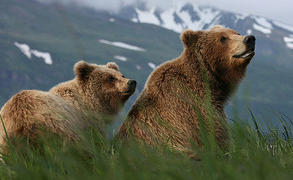 |
Anchorage Upon arrival in Anchorage, pick up your rental car at the airport or downtown. Get ready for an unforgettable Alaska vacation. Spend the rest of the day with sightseeing activities in and around Alaska's largest city: take a hike along the coastal trail with sweeping views of Mt. Denali and Mt. Susitna aka: the "Sleeping Lady" - shop for Alaska Native Art, or spend some time at a museum. Try some fresh Alaska seafood (Salmon, Halibut and Dungeness Crab) for dinner in one of the many excellent restaurants around the hotel. Overnight: Anchorage |
|
Day
02 |
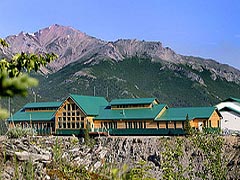 |
Anchorage - Denali National Park Enjoy sweeping views of snowcapped mountain peaks in the distance while traveling from Anchorage on the George Parks Highway to Wasilla - home of the Iditarod Headquarter. Follow the highway acrosos the Denali State Park with good wildlife viewing, canoe rental and excellent hiking opportunities. Arrive at Denali National Park and check in your hotel. Denali, the “Great One”, is the name Athabascan people gave the massive peak that crowns the 600-mile long Alaska Range. Denali National Park and Preserve was created 1980 from the former Mt Mc.Kinley National Park. At over 6 million acres, the park is larger than the State of Massachusetts. It exemplifies interior Alaska’s character as one of the world’s last great frontiers for wilderness adventure and it remains largely wild and unspoiled, as the Athabascan knew it. Distance 230 Miles | Overnight: Denali National Park |
|
Day
03 |
 |
Denali National Park Early (pre-reserved time) shuttle bus departure - the Denali park road is closed for private vehicles - for a full day wildlife observation and sightseeing tour to the Eielson Visitor Center, Wonder Lake or Kantishna within the shadows of Mt. Denali - with 20.320 ft. the highest mountain in North America. The views from here are just spectacular. Look for Dall sheep, moose, caribou, wolves and grizzly bears roaming throughout the park or observe one of the 150 different bird species which inherit the Denali National Park area. Many hiking trails along the ridges and throughout the valleys are easily accessible from the road. Park ranger at the visitor center are conducting interesting campfire talks, sled dog demonstrations and short guided nature walks on a regular basis. Return to the Park entrance anytime during the day. Overnight: Denali National Park |
|
Day
04 |
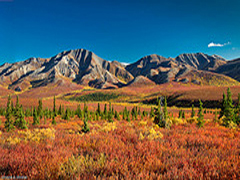 |
Denali National Park - Fairbanks Short drive via Nenana (Alaska Ice Classics) to Fairbanks. Fairbanks, known as the Golden Heart City of Alaska, is the gateway to the interior and features almost 24 hours of daylight during the summer months. You are invited to explore the local gold rush history, its vibrant traditional native cultures as well as its abundant wildlife and fantastic scenery. Tucked into miles of unexplored wilderness only 120 miles from the Arctic Circle, Fairbanks offers excellent year-round outdoor recreational opportunities. This afternoon you may visit the renown Alaska University Museum featuring Alaska's natural history best collection, Alaskaland or take an authentic sternwheeler on a scenic 20-mile roundtrip cruise down the Chena and Tanana Rivers. Enjoy lively narration, stop at a reconstructed Athabascan Indian Village to learn about native hunting & fishing techniques and watch a dogsled demonstration. Distance: 110 Miles | Overnight: Fairbanks |
|
Day
05 |
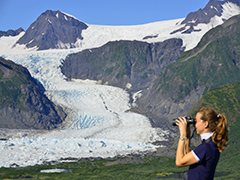 |
Fairbanks - Tok Heading south, the Richardson Highway passes through stands of white birch and black spruce, often photogenically close to the Tanana River. Soak up the raw beauty of the drive into the central Alaska Range, often paralleled by the Trans-Alaska-Pipeline. Born as a construction station on the highway, Tok's role in the world has never expanded much beyond being a stop on the road. With its location at the intersection of the Alaska Highway and the Glenn Highway to Anchorage and Prince William Sound, the town has built an economy of gas stations, gift stores, cafes, and hotels to serve highway travelers. It brags of being the coldest community in North America, a dubious distinction made possible by both the latitude and the distance from the moderating influence of the ocean. Distance: 180 Miles | Overnight: Tok |
|
Day
06 |
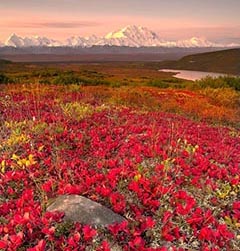 |
Tok - Dawson City (Yukon Territory) The Yukoners call it the 60 mile. To Alaskans it is the Taylor Highway, but to everyone who has driven this beautiful road, it is known as the "Top of the World Highway." Please allow plenty of time for travel as the road is winding and narrow in many places. The road is maintained only during late spring to early fall corresponding to operation of the ferry service at Dawson City. Border crossing at Poker Creek is not allowed unless customs offices are open (9 AM to 9 AM Pacific Time). The Yukon (Top of the World) Highway Route #9 continues from Dawson to the Alaska and Yukon border, where it becomes the Taylor Highway - Alaska Route #5. Top of the World Highway is so named because much of its route meanders along the tops of mountains and ridges with endless views. Those driving along this route are able to enjoy beautiful vistas including spectacular alpine valleys. During the summer months the sun sets forever and you'll have hours of light to set-up that special sunset photograph. Arrival in Dawson City: It all began with Robert Henderson, a fur trapper and part-time prospector who, in 1894, found gold in Rabbit Creek (later renamed Bonanza) not far from where the Klondike River empties into the Yukon. By 1904, an estimated $100 million in gold had been shipped from the Klondike. No one really knows how much gold was found, however, because lots of it was never registered. At its height, Dawson City had a population of 35,000, but the "stampede" of `98 died out almost as quickly as it began. Distance 190 Miles | Overnight: Dawson City |
|
Day
07 |
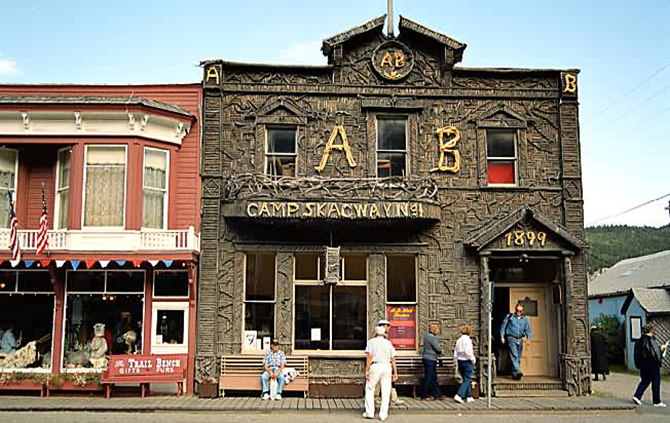 |
Dawson City A day to explore Dawson City: Diamond Tooth Gertie's Gambling Hall - a real Klondike Gold Rush-style gambling hall featuring Texas Hold'em poker, Blackjack and other table games plus slot machines. Live entertainment features Diamond Tooth Gertie and her Can-Can Girls. Jack London's Cabin - an interpretative center featuring the life of famed American author Jack London during his time in the Klondike. Robert Service Cabin, the Palace Grand Theatre - Originally built in 1898 by impresario and gold seeker, Arizona Charlie Meadows. It has been fully restored and is a National Historic Site. Midnight Dome Road - Is a five-mile-long road to the top of Midnight Dome overlooking Dawson City, the Yukon River and it’s gold fields. Overnight: Dawson City |
|
Day
08 |
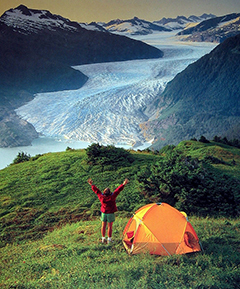 |
Dawson City - Whitehorse The Klondike Highway generally parallels the Yukon River as it winds its way from Dawson City to Whitehorse. Water in the Yukon River travels more than 3,000 km from headwaters near the Chilkoot Pass to the mouth at the Bering Sea. As you travel you will leave country that has been glaciated many times to visit an environment, known as Beringia, which was ice free during the last major ice age. Steppe bison and woolly mammoths inhabited this cool, ice-free land that once connected the continents of North America and Asia. The Klondike Highway North passes through three communities on the way to the historic gold rush town of Dawson City - and there is plenty to see along the way. The route of the old Overland Trail between Whitehorse and Dawson City meets the Klondike Highway north of the Braeburn highway lodge and generally follows the same route to Carmacks. Stop at Montague Roadhouse, a monument to the trials of travelling in an open stage during the cold Yukon winters. There were roadhouses every 20 miles to rest the horse and refresh the passengers. Carmacks is the home of the Little Salmon/Carmacks First Nation. The Tagé Cho Hudän Cultural Centre has many exhibits depicting the lifestyle of the Northern Tutchone-speaking people of this region. Carmacks Roadhouse was another stop along the Overland Trail and the centre of the original community. The road between Minto and Pelly Crossing follows the route of a Selkirk First Nation traditional trail. The Pelly Cultural Centre at Pelly Crossing is housed in a reproduction of the original Big Jonathon House at Fort Selkirk Historic Site on the Yukon River. The Cultural Centre features the area’s Selkirk First Nation artists. Distance 270 Miles | Overnight: Whitehorse |
|
Day
09 |
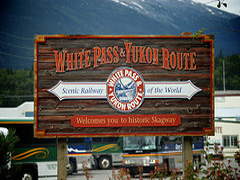 |
Whitehorse - Haines Time to explore the sights of Whitehorse: The McBride Museum, SS Klondike and the Yukon Beringia Center. The Haines Highway is noted for its grandeur and unmatched alpine scenery. Take your time and enjoy the many sights such as: Klukshu - a native summer fishing camp with great photo opportunities, the Chilkat Bald Eagle Preserve - home of the largest gathering of bald eagles (more than 3000 during winter) in the world and the historic Dalton Post. Arrive in Haines - surrounded by the magnificent peaks of the Chilkat Mountains. Visit the Chilkat Center of Arts, the Totem Village, Sheldon Museum and Dalton City - set for the Disney Movie " White Fang ". Enjoy a walk along the historic Captains Quarter and the boat harbor. Distance: 250 Miles | Overnight: Haines |
|
Day
10 |
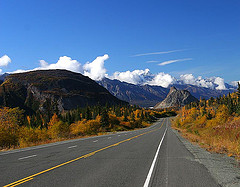 |
Haines | Optional Transfer to Skagway or Juneau Drop off your rental car in Haines. You may extend your tour by taking the Alaska Ferry or catamaran to the gold rush town of Skagway. Skagway is Alaska's northernmost stop on the Alaska Marine Highway Ferry system serving communities along the Inside Passage. It is also the home of the Klondike Gold Rush National Historical Park. Skagway has a historical district of about 100 buildings from the gold rush era. |
| Rates in US $ / per Person | Single | Double | Triple | Quad | Child | |
| May 10 - May 31 | $4257.00 | $2172.00 | $1553.00 | $1240.00 | $131.00 | |
|
|
||||||
| June 1 - August 31 | $5017.00 | $2552.00 | $1815.00 | $1437.00 | $131.00 | |
|
|
||||||
| September 1 - September 15 | $4257.00 | $2172.00 | $1553.00 | $1240.00 | $131.00 | |
| Rates in US $ / per Person | Single | Double | Triple | Quad | Child | |
| May 10 - May 31 | $4505.00 | $2296.00 | $1627.00 | $1288.00 | $131.00 | |
|
|
||||||
| June 1 - August 31 | $5202.00 | $2645.00 | $1859.00 | $1463.00 | $131.00 | |
|
|
||||||
| September 1 - September 15 | $4505.00 | $2296.00 | $1627.00 | $1288.00 | $131.00 | |
| Departures Daily from May 10 - September 15 |
|
| Rates in US $ | per Person | Adult |
| Talkeetna: Mt. Denali Flightseeing Tour + Optional Glacier Landing | |
| Denali: Extend your Shuttle Bus Tour to Wonder Lake | |
| Exchange Shuttle Bus to Escorted 13-Hour Kantishna Wilderness Lodge Tour / Denali Backcountry Lodge Adventure including Interpretive Program, Gold Panning and Lunch Departure: 6:00 am / Return 7:30 pm |
|
| Denali: Exchange Shuttle Bus to 8-Hour Tundra Wilderness Tour including Boxed Lunch Departure: 2:00 pm / Return 8:00 pm |
|
| Fairbanks: 1/2 Day Bush Mail Plane Flight to Arctic Village | |
|
Superior Hotel Category (*** Hotels, Motels & Lodges) Superior Hotels offer a good amount of essential guest services and are located in downtown locations and/or in/near national park areas. All superior class hotel rooms are equipped with a private bathroom. Example larger hotel chains for superior class hotels are: Holiday Inn, Howard Johnson, Guesthouse Inn, Ramada Inn, High Country Inn, Aspen Hotel Group, Comfort Inn. As you might be aware, that these hotel chains are not available throughout Alaska. In such cases or/and when we feel that Alaskan owned hotels & lodges offer a better experience, we go with that choice. Cabins and Cottages also considered in this category to make your experience even more ‘Alaskan’. We ensure that all the Cabins & Cottages have a private bath to make your stay comfortable. 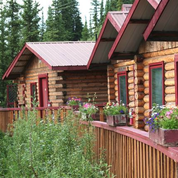 First Class Hotel Category (**** Hotels & Lodges) First Class hotels usually offer an additional amenities such as a restaurant, lounge, bar, fireplace seating, fitness room, swimming pool/hot tub, etc. All rooms in First Class hotels belong to a higher category and are always equipped with a private bathroom. Most hotels in this category are usually located in prime locations in prime downtown locations or in national parks. These include larger hotel chains such as: Marriott Hotels, Sheraton, Westmark Hotels, Princess Hotels and Lodges, Clarion Suites, Comfort Inn & Suite. The larger hotel chains are only available in Anchorage and Fairbanks. If a major hotel chain is not available, we prefer to book local premium hotels/deluxe cabins or cottages for our clients. Please note that premium accommodations may not be available in small towns; in such cases we will book the best available accommodation. 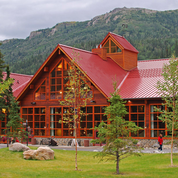 |
Rental CarWe’ve put together a selection of rental car categories designed specifically with Alaska travel in mind. Whether you’re planning a short getaway or a longer adventure, traveling solo or with a group, or working within a specific budget, you’ll find options that balance comfort, space, and practicality for the unique conditions of Alaska’s roads. From midsize cars for easy city driving to spacious SUVs and vans ideal for longer scenic routes or family trips, there’s a category for every type of journey. Not sure which vehicle is right for your plans? Simply reach out to us—we’ll be happy to recommend the rental car category that best matches your itinerary, group size, and travel style. Here are the car rental categories we offer: Mid Size Car (included - part of the package / additional day $150) Generally, midsize cars measure between 180 to 195 inches in length but can vary depending on specific models. Mid-size cars, also commonly known as intermediate or standard cars, are four-door sedans that are more spacious than compact cars while still being fuel-efficient. They can fit 3 or sometimes 4 bags depending on the model. They feature more interior space compared to compact cars and offer comfortable seating for four to five passengers.  Full Size Car (upgrade $12 per day / additional day $160) Full Size cars are what many people would describe as large cars. A full-size car typically refers to a vehicle that offers more extensive interior space, comfort, and power compared to smaller vehicles such as compact or midsize cars. These cars usually have larger dimensions, including length, width, and height. They commonly feature roomy interiors with ample seating for five or more passengers along with expanded trunk capacity for luggage or cargo. Historically, full-size cars were synonymous with large sedans boasting V8 engines and body-on-frame construction. While this has changed over time due to evolving industry trends and technological advancements, what remains consistent is the emphasis on spaciousness, comfort, and performance these vehicles provide.  Standard Size SUV (upgrade $88 per day / additional day $240) SUVs (short for sport or suburban utility vehicles) are good-sized vehicles with a rugged look, set higher off the road than normal cars. In an SUV, the description of “standard” generally refers to the size of the SUV. The standard SUV is larger than the intermediate or compact versions. These full-size models are more powerful, like a truck, and they are usually more equipped to handle a wider variety of terrains and road conditions as well. In addition to being powerful, their size also means that they typically have more seating capacity than the smaller SUVs. They can seat more passengers and have more cargo space for transporting luggage and equipment.  Standard Elite SUV (upgrade $105 per day / additional day $255) Perfect for families, groups, and adventurous travelers, the Standard Elite SUV delivers a spacious and comfortable ride with room for up to 7 passengers. These versatile SUVs combine strong performance with practical features, including automatic transmission and air conditioning, making them ideal for both city streets and Alaska’s rugged landscapes. Models in this category offer generous cargo space for luggage, gear, or supplies, ensuring every trip is smooth and stress-free. With their reliable handling, powerful engines, and family-friendly interiors, Standard Elite SUVs are built for travelers who want comfort, convenience, and confidence on the road. Book from this vehicle group to enjoy a safe, capable, and spacious SUV designed to make every journey a memorable adventure. 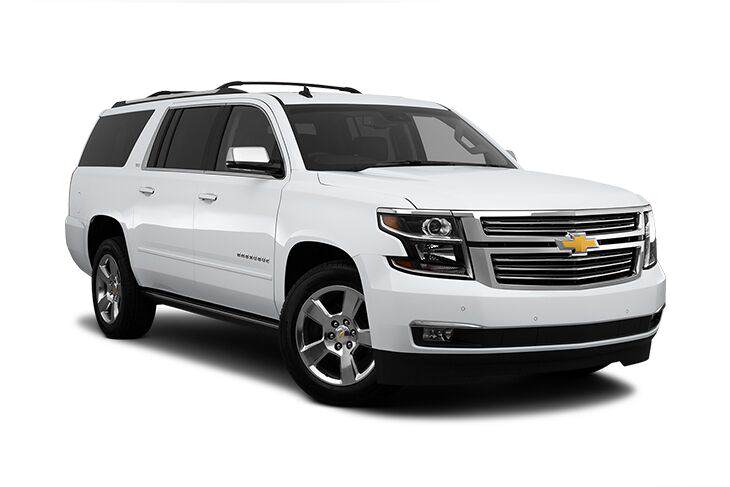 Mini Van (upgrade $125 per day / additional day $275) This roomy mini van is your ticket to family adventures and travel memories on your next rental. More spacious than a full-size car, and with better gas mileage than an SUV, a minivan is a 7-passenger van that provides unbeatable comfort and convenience. By providing leg and luggage room, configurable seating and storage layouts, easy in-and-out, competitive fuel efficiency, and high-performance drive—all without sacrificing style—minivans accommodate every kind of group outing, from lengthy family vacations to quick business trips. Did somebody say “road trip”?  11 Passenger Van (upgrade $250 per day / additional day $400) Choose a 11-person passenger van so that no one gets left behind on your road trip or vacation. Instead of trying to coordinate a car pool; save time, resources, and gas money by putting everyone together in one clean and comfortable van. You'll find each passenger has much more leg room. Sample Models: Chevrolet Express, Ford Transit or similar Sample Features: 3 Doors –10 to 11 Passengers- 6 Large Suitcases - Air-conditioning - Automatic Transmission 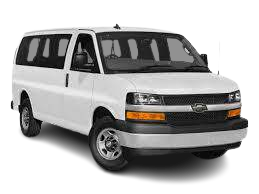 |
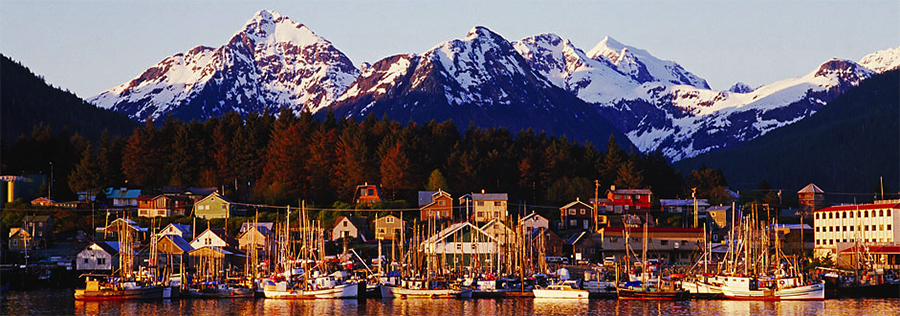 |
||||||||||||||||||||||||||||||||||||||||||||||||||||||||||||||||||||||||||||||||||||||||||||||||||||||||||||||||||||||||
Self Drive Tours Information - FAQ
|
||||||||||||||||||||||||||||||||||||||||||||||||||||||||||||||||||||||||||||||||||||||||||||||||||||||||||||||||||||||||
